With the various needs of modern life, spare parts for producing these important products are constantly emerging. The following is a list of the main application areas of these 10 types of valves by Jiernas Valve.
1) The valves required for refining units are mostly pipeline valves, mainly gate valves, globe valves, check valves, safety valves, ball valves, butterfly valves, and drain valves. Among them, gate valves account for about 80% of the total number of valves (valves account for 3% to 5% of the total investment of the unit);
2) Chemical fiber equipment, chemical fiber products mainly include three categories: polyester, acrylic, and viscose. The required valves include ball valves, jacket valves (jacket ball valves, jacket gate valves, jacket globe valves);
3) Acrylic plant. This device generally requires valves produced at a certain scale, mainly including gate valves, globe valves, check valves, ball valves, drain valves, needle globe valves, and plug valves. Among them, gate valves account for about 75% of the total number of valves;
4) Synthetic ammonia plant. Due to different synthesis and purification methods of ammonia, the process flow and technical functions of the required valves are also different. At present, domestic synthetic ammonia plants mainly require gate valves, globe valves, check valves, drain valves, butterfly valves, ball valves, diaphragm valves, regulating valves, needle valves, safety valves, and high-temperature and low-temperature valves;
2. The application of valves in hydropower stations and the development of large-scale power station construction in China require large-diameter and high-pressure safety valves, pressure reducing valves, globe valves, gate valves, butterfly valves, emergency shut-off valves, flow control valves, and spherical sealed instrument globe valves. (According to the national "15th Five Year Plan", except for Inner Mongolia and Guizhou provinces, which can build units of more than 200000 kilowatts, other provinces and cities can only build units of more than 300000 kilowatts);
3. Metallurgical application valves and alumina behavior in the metallurgical industry mainly require wear-resistant slurry valves (flow type globe valves) and regulating drain valves. The steelmaking industry mainly requires metal sealed ball valves, butterfly valves, oxidation ball valves, globe flashers, and four-way directional valves;
4. With the development of offshore oil field exploitation, the number of valves required for marine applications has gradually increased. Ocean platforms require shut-off ball valves, check valves, and multi way valves;
5. Valves for food and pharmaceutical applications mainly require stainless steel ball valves, all plastic ball valves, and butterfly valves in this industry. Among the above 10 categories of valve products, the demand for general valves is relatively high, such as instrument valves, needle valves, needle globe valves, gate valves, globe valves, check valves, ball valves, and butterfly valves;
6. The application of valves in rural and urban buildings, as well as in urban construction systems, generally uses low-pressure valves, and is currently developing towards environmentally friendly and energy-saving directions. Environmentally friendly rubber plate valves, balance valves, centerline butterfly valves, and metal sealed butterfly valves are gradually replacing low-pressure iron gate valves. The valves required for urban construction in China are mostly balance valves, soft sealed gate valves, butterfly valves, etc;
7. In rural and urban heating systems, a large number of metal sealed butterfly valves, horizontal balance valves, and buried ball valves are required to solve the problem of longitudinal and transverse hydraulic imbalance in pipelines, achieving the goals of energy conservation and heat balance.
8. In environmental protection applications such as valves and domestic environmental protection systems, the water supply system mainly requires centerline butterfly valves, soft seal gate valves, ball valves, and exhaust valves (used to remove air from pipelines). The sewage treatment system mainly requires soft sealed gate valves and butterfly valves;

